► Toyota Supra review: 3.0 and 2.0
► Straight-six BMW turbo, RWD
► Auto and manual gearboxes tested
The Toyota Supra range continues to expand and you can now choose the flagship sports coupe with a manual transmission for the first time in the three years it’s been on sale. It has finally closed the gap with the Porsche 718 Cayman, which has always offered PDK auto or manual gearbox to customers.
Many supercar brands have stopped selling three-pedal sports cars, as the onslaught of paddle-operated transmissions has reduced global take-up of manuals – but nobody told Toyota. Joining the excellent GR Yaris hot hatch and GR86 coupe, the new Supra manual means all three Gazoo Racing performance cars can now be had with DIY gears.
The manual Supra is available only with the straight-six engine, not the cheaper 2.0 four-pot which remains auto-only, and costs from £53,495 in the UK (a useful £1500 less than the equivalent eight-speed auto). Toyota expects the manual option to make up 46% of European sales.
What’s the manual Supra like?
We had only a few laps of the unfamiliar Monteblanco circuit to the west of Seville in which to assess the six-speed manual Supra. They’ve had to re-engineer the centre console so that self-shifting drivers’ knuckles don’t knock the heating controls and the gearchange action feels pleasing enough, if not the last word in snickety precision. Interestingly, they’ve made the gearknob heavier to create more inertia during the shift action, despite removing weight elsewhere in the 2022 Supra.
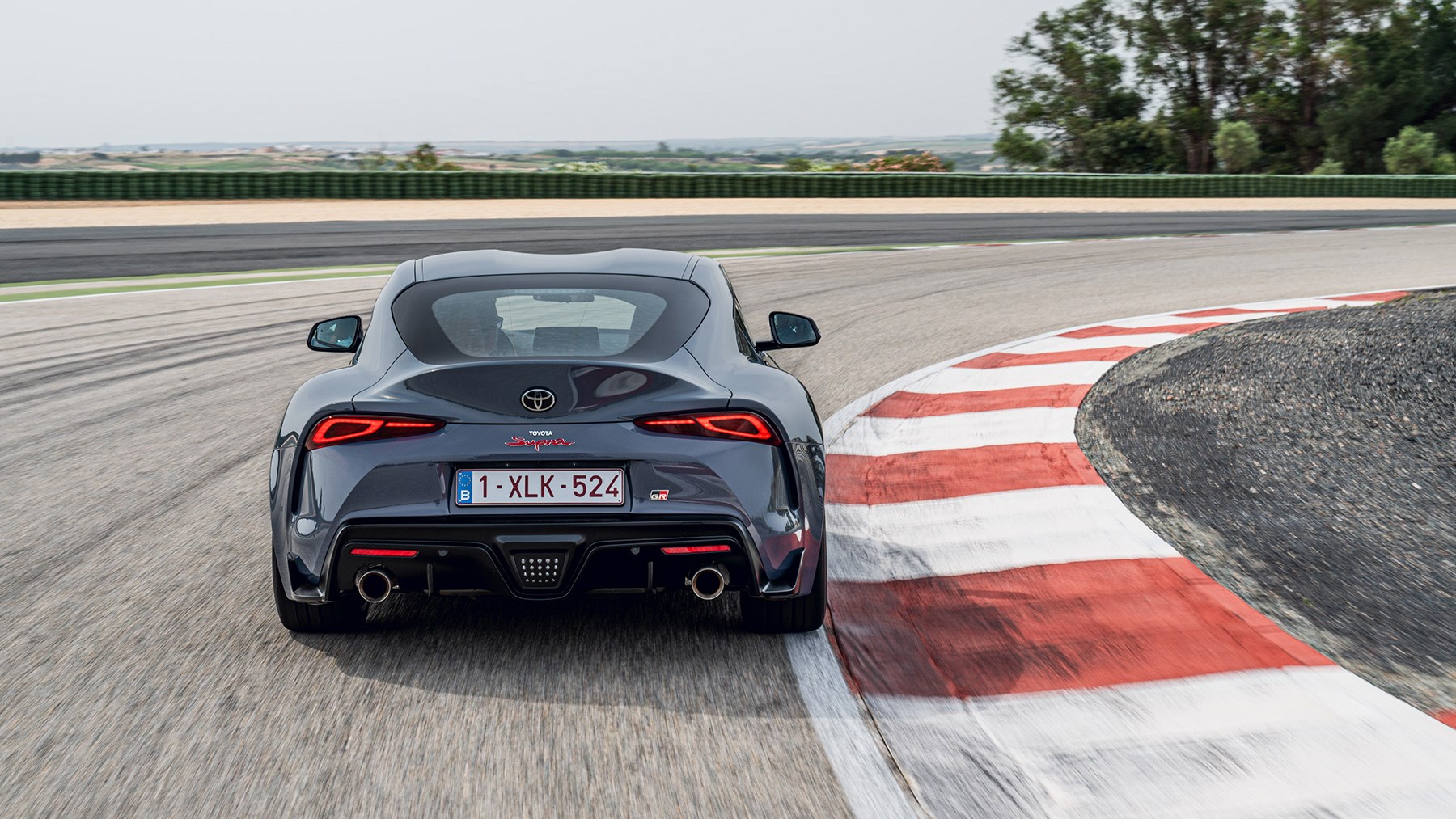
Manual gear control worked well on track and drivers can choose hero-mode rev synchro matching for perfect downshifts, or choose to do the rev-blipping on their own. This remains a big, heavy car at 1577kg and we found ourselves preferring the lighter, defter charms of the brilliant GR86 also launched at Monteblanco in summer 2022.
The arrival of the manual transmission is accompanied by various detailed changes to the Supra chassis designed to improve the handling: damper calibration is changed, rubber suspension bushing is revised and there’s a welcome drop in weight by around 40 kilos. There’s even a new hairpin mode in the stability control, which allows a little slidery in uphill sharp corners. It was not possible to test this on the pancake-flat Spanish track.
We’ll update our Toyota Supra review once we’ve driven the manual on UK roads; this may take a while, since the three-pedal car is not due to arrive until the winter, possibly spilling into early 2023.
An ode to the manual gearbox: why enthusiasts still crave DIY transmissions
Which is better: the four-cylinder Supra 2.0 or the 3.0 six?
The latest Toyota Supra launched with just a BMW straight-six in the 3.0, but there’s also a cheaper 2.0-litre four-cylinder version in town – and we’ve tested it in our latest video review below.
Join James Dennison for a hands-on road test of the smaller, lighter Supra where he discusses the pros and cons of the 2.0 versus the 3.0. The cheaper four-pot starts at £49,495 – hardly cheap, but a handy £8k less than the straight six.
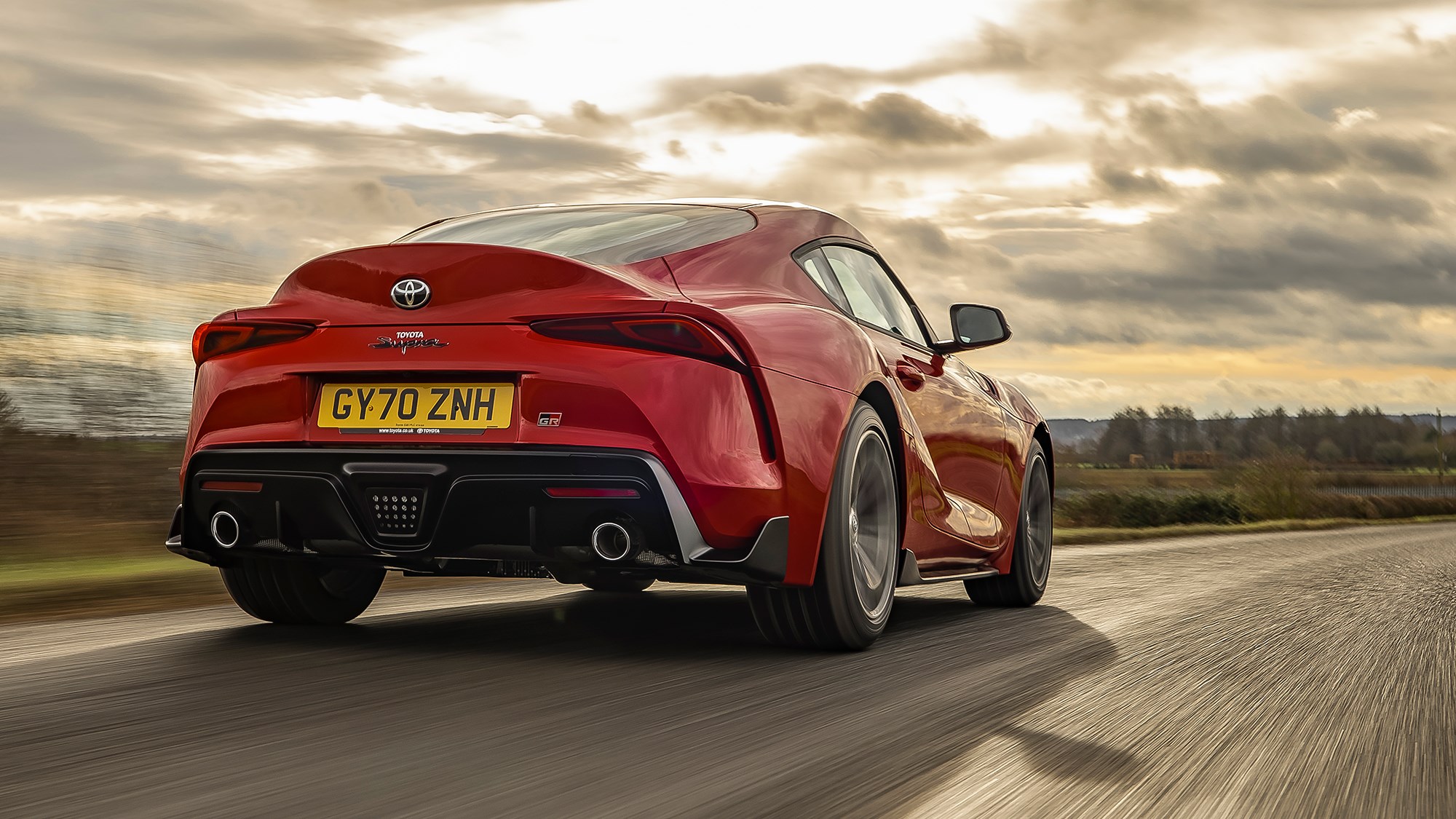
The Supra 2.0 looks virtually identical to the 3.0: you get 18-inch alloys, instead of 19s, smaller exhausts and slightly fewer toys inside. Crucially, there’s quite a drop in power – 254bhp instead of 335bhp, while torque drops to 295lb ft from 427lb ft.
In reality, that’s plenty enough. As you’d guess from the performance claims (5.2sec 0-62mph, top speed 155mph – the same as the 3.0), it’s pretty quick and the lighter, dartier mass shaved by 100 kilos helps the handling. It’s not quite the same sonically, and we miss the multi-pot thrum from the straight six. Read on to see what we make of the regular Supra.
CAR lives with a Toyota Supra: don’t miss our long-term test
Isn’t the Supra basically a BMW Z4 with a different body?
Yes and no; the Supra and Z4 are twins, built upon the same platform at the same plant in Graz, Austria and they share much of the same hardware, including the same single-turbo 3.0-litre straight-six and eight-speed torque converter auto gearbox (though the manual Supra uses a bespoke, non-BMW transmission).
Chief engineer Tetsuya Tada explains that when he and his opposite number at BMW opened talks, a pure two-seater sports car was a premise that took some convincing for both companies, but eventually he won them over. ‘We discussed what type of sports car we’d make, and what had already been decided: Toyota would make a coupe and BMW would make a convertible. We had a look across the market at what vehicles offered a coupe and a convertible on the same platform, and it was only the Porsche Cayman and Boxster. [So,] let’s say Toyota will try and beat the Cayman and BMW will beat the Boxster. Then we took the time to try and come up with the platform elements.’
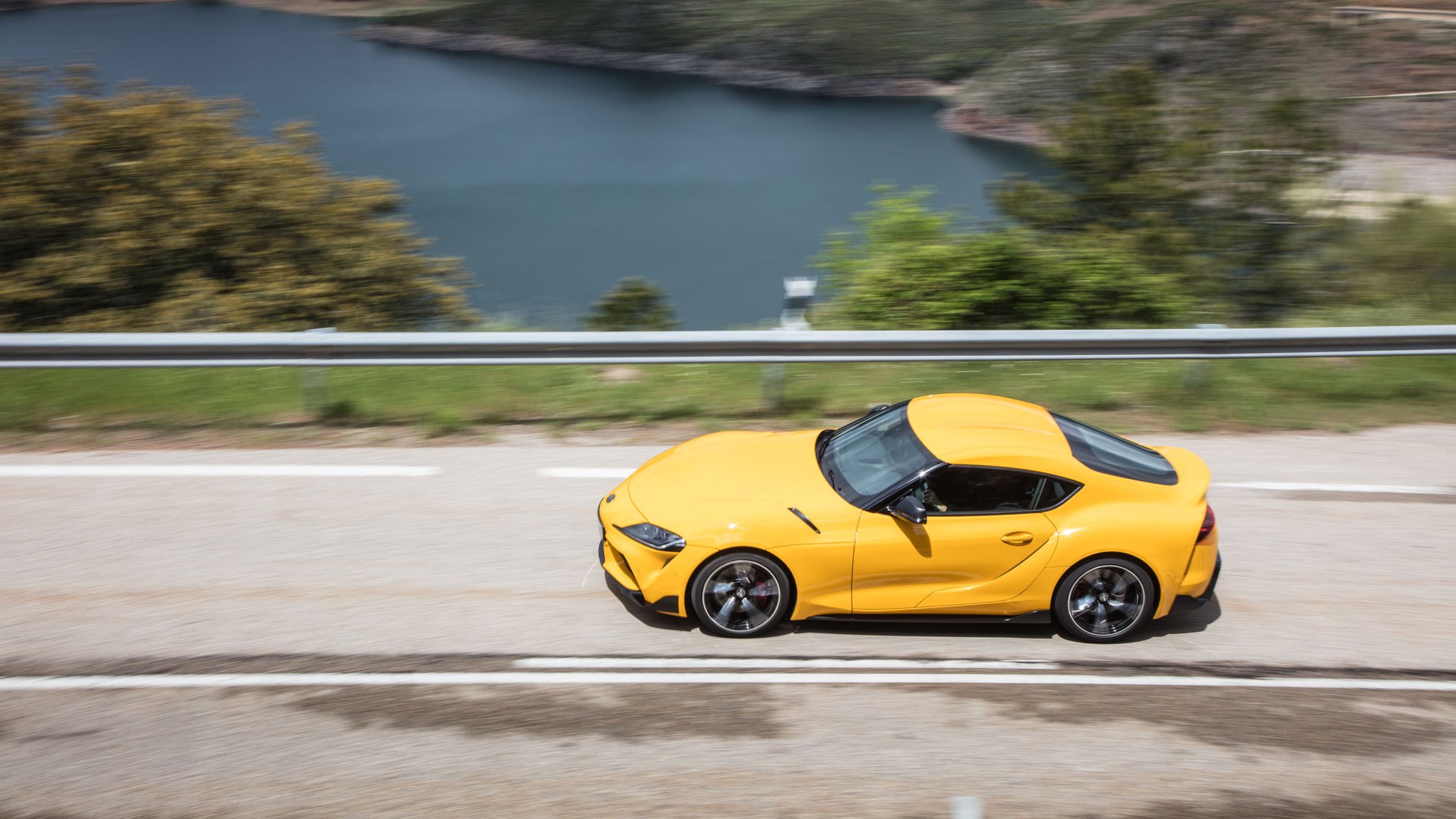
The Supra’s engineers talk of three pillars: a very short wheelbase (shorter even than the Toyota GT86, but with larger wheels), wide track widths and a low centre of gravity (lower again than the boxer-engined GT86, despite the Supra’s taller-sited in-line six). Tada says a straight-six engine, in-keeping with Supra heritage, was a must-have from the beginning, and a major reason to partner with BMW.
According to Toyota’s side of the story, once the components had been chosen – the majority of which are sourced from BMW, including some suspension components from the BMW M3 – the two companies developed the two cars entirely separately. They were styled in separate studios and there was no overlap between the development – Toyota says its engineers didn’t even drive the Z4 prototypes, and vice versa.
Tada says the first time he drove the Z4 was a final pre-production prototype just before it launched, and the Supra’s chief test driver Herwig Daenens told us he is still yet to drive a Z4.
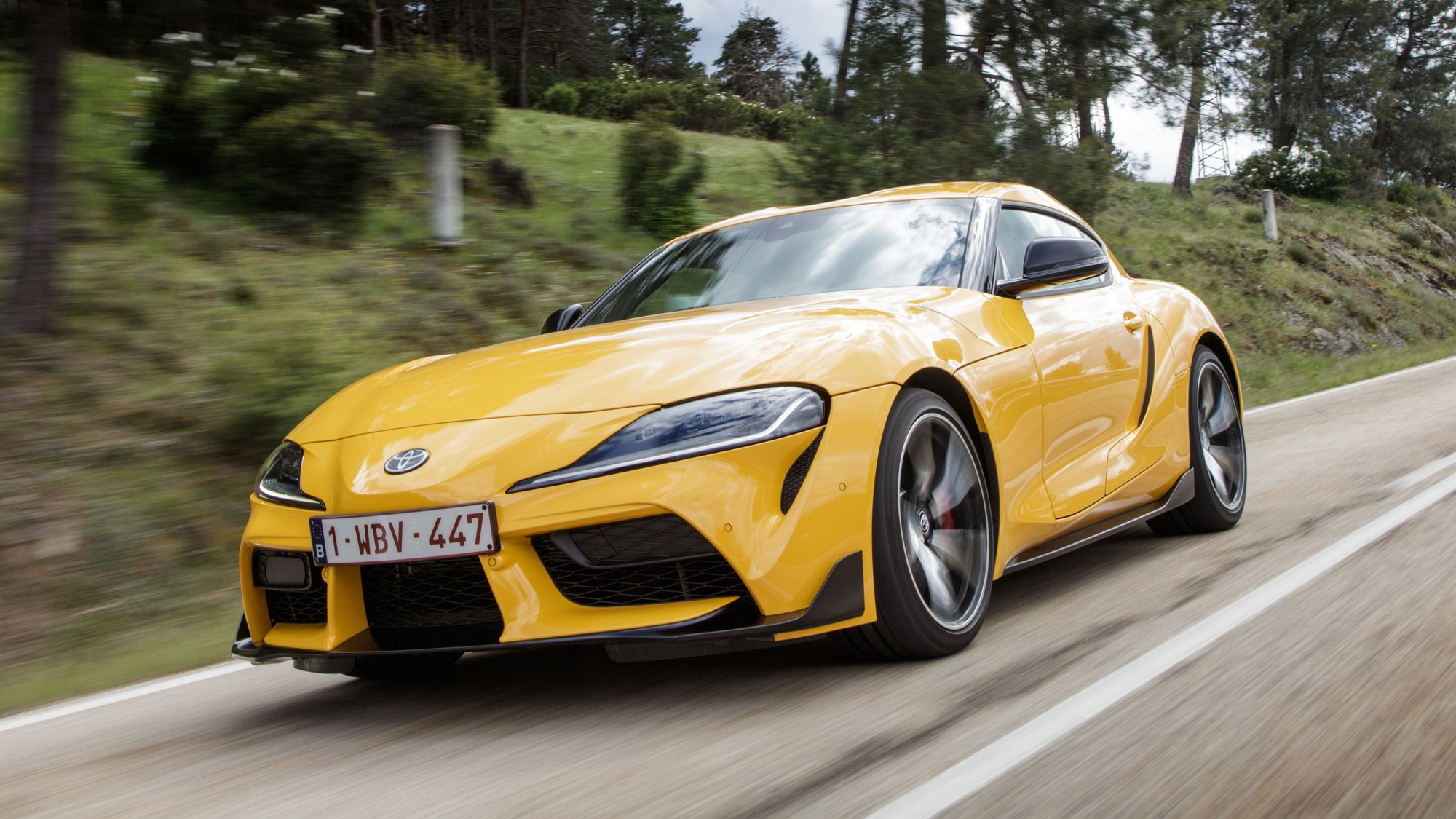
While the two cars share the same hardware, the two teams have developed different settings for the suspension and electronics – of which there are plenty on this car, with an active differential, adaptive dampers and electric power steering.
What’s the new Supra like to sit in?
Unsurprisingly, rather like a Z4 – you can recognise plenty of shared components, not least practically all of the switchgear, the iDrive multimedia system and its rotary controller, the door handles and more. The two cars do have a distinct character, however. The Supra’s darker colour palette and the continuous strip across the dashboard that delineates the air vents helps make the dash feel wider, lower and more sports car-y compared with the Z4’s more saloon-esque atmosphere. The downside is that in some places the Supra’s interior feels a little cheaper in its materials and surfaces. In places it feels a little more downmarket than its lofty £50k+ price might suggest, carbonfibre centre console aside.
The instrument cluster feels more like that of a proper sports car than the Z4, with a large central tacho with an attractive 3D effect style, and a large-writ gear indicator – a welcome antidote to the Where’s Wally gear readout lost in the Z4’s digital instrument panel.
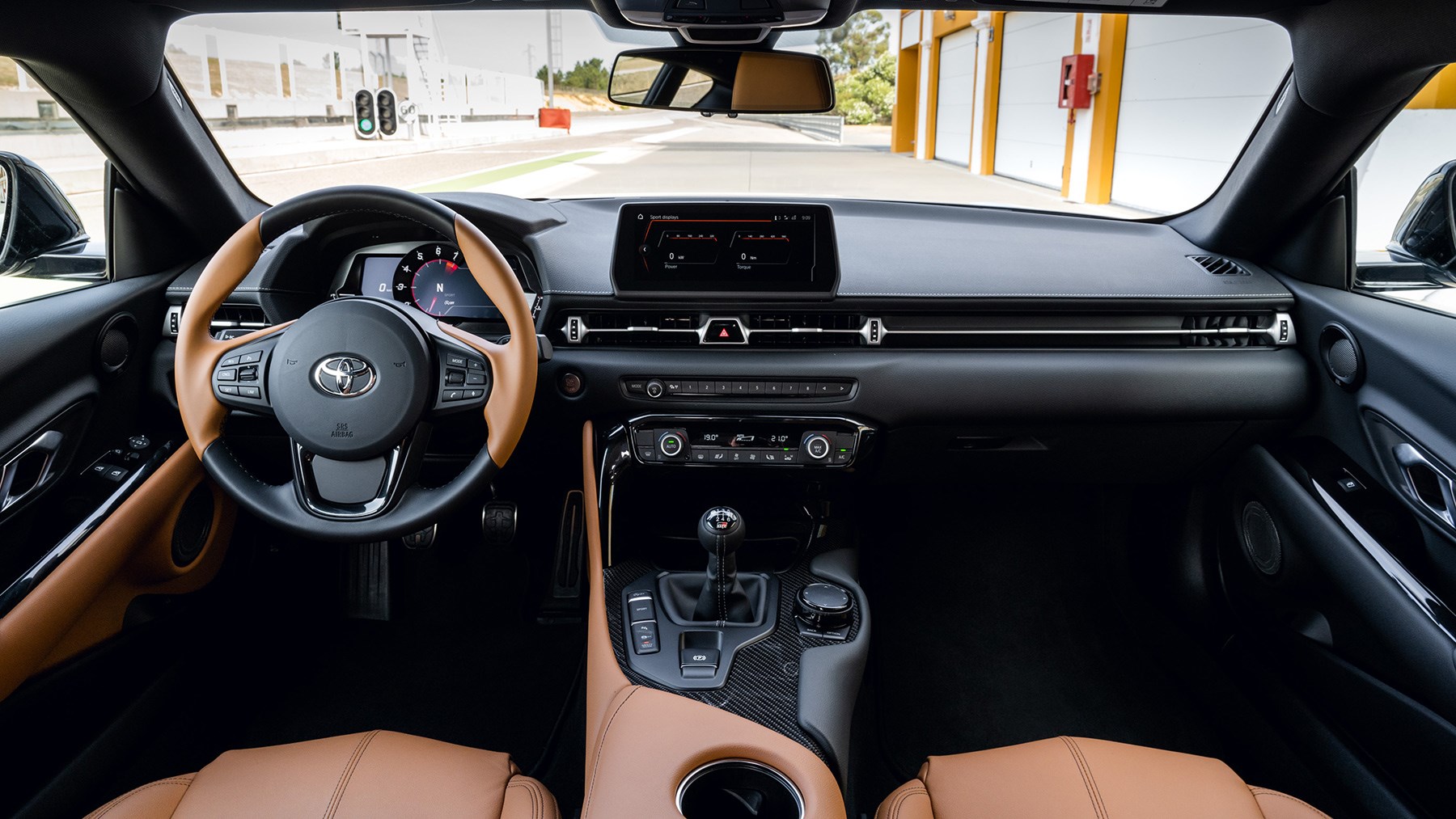
Like the Z4, the main multimedia display is upon a central screen on top of the dashboard, with a combined touchscreen and clickwheel interface but in the Supra it’s squashed into a letterbox format that can be hard to read, particularly in direct sunlight. Navigation instructions in particular are hard work. The iDrive system has a Toyota skin at start-up, and Toyota-specific warning messages but otherwise the same fonts and menus as BMW. Tada told us that changing the warning messages alone took 20,000 lines of code; to change the entire system would have added a significant bump to the car’s price.
Let me guess – it feels just like a Z4 to drive too?
This is subjective but to me, the Supra feels more communicative and more engaging to drive than the BMW. Could be the extra torsional rigidity afforded by the fixed-head body, could be the marginally different kerbweight and centre of gravity, could be Toyota’s own settings for the springs, dampers and various electronic systems’ calibration, but on first impression, the minor differences have added up to a tangible difference.
The steering isn’t full of feel but is fast and incisive, and what it might lack in the finer degrees of feedback you can read through the chassis instead. The Supra’s balance and neutrality is one of its standout features (like the Z4, Toyota claims a 50:50 weight distribution) and there’s plenty of front-end grip to lean on. ‘I hate understeer,’ chief test driver Daenens told us, and it shows – you’d have to be quite heavy handed to make the Supra’s front end wash wide in ordinary driving conditions. The rear, too, is planted but the Supra can be coaxed into gentle oversteer with a lift of the throttle, helped by the active diff which helps both traction out of corners and rotating the car to the apex within them.
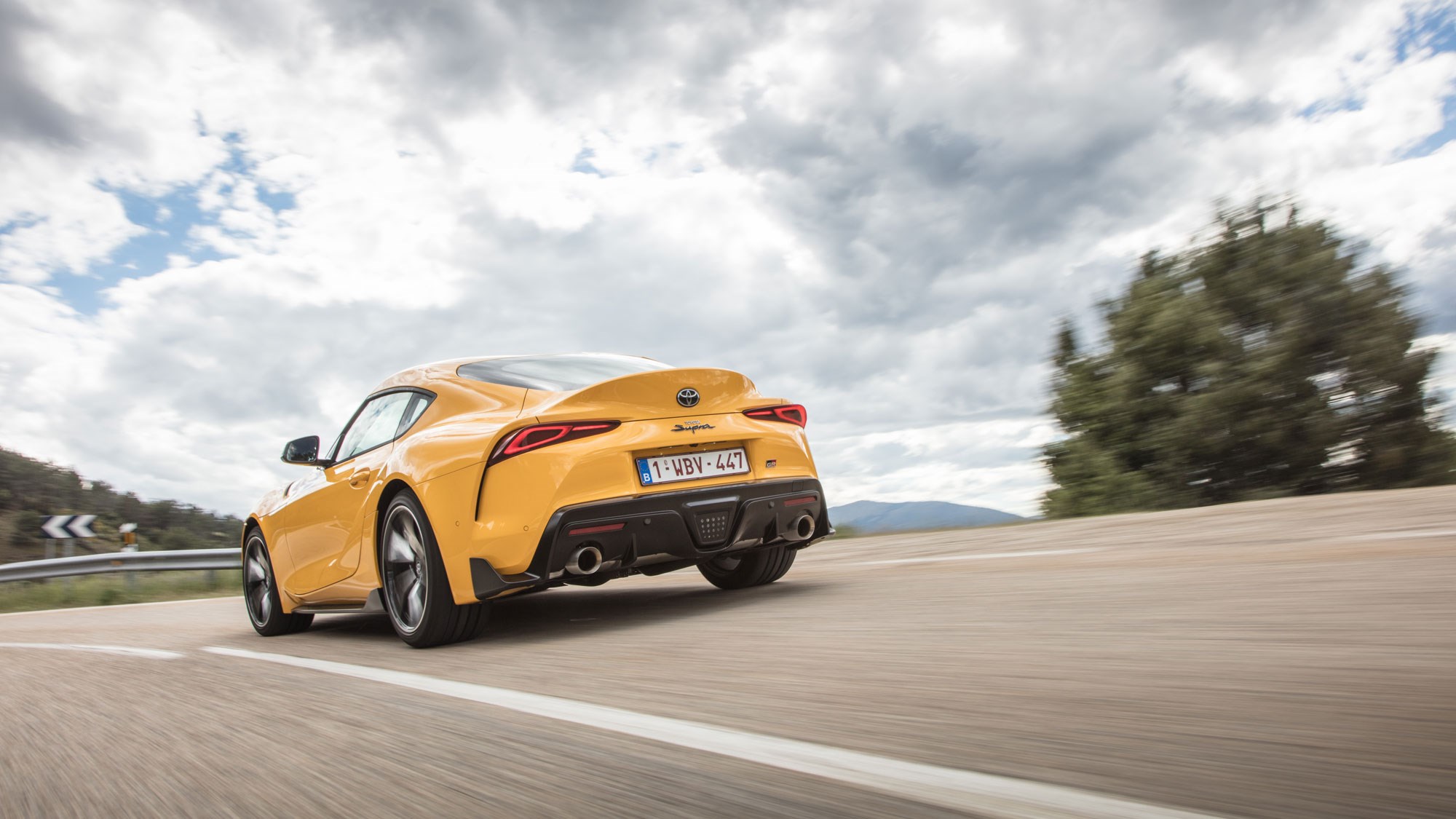
And when you’re not in the mood to have fun and just want to get somewhere?
Like the Z4, you sense that you could easily use a Toyota Supra all year round. Rolling refinement is excellent by sports car standards, with wind and road roar surprisingly well suppressed at a cruise. Around town it’s entirely docile and tractable, with a helpfully decent turning circle.
There are two driving modes, Normal and Sport, altering the pre-sets for the power steering, transmission, active diff, stability control and the standard-fit adaptive dampers. It’s also possible to mix and match in Individual mode.
In Normal mode, the ride quality on the standard-fit adaptive dampers is impressively smooth, with the exception of a little occasional see-saw choppiness that’s common to many short-wheelbase cars. Even the firmer Sport mode is entirely acceptable on the majority of roads.
The boot can just about accommodate three big bags, making a getaway for two feasible but, oddly, there’s no dividing section between the boot and the cabin. Purportedly that’s to increase loading practicality for long items, and it can be handy to reach directly into the boot from the cabin, but hearing your bags slide around the boot is a real distraction on a winding road.
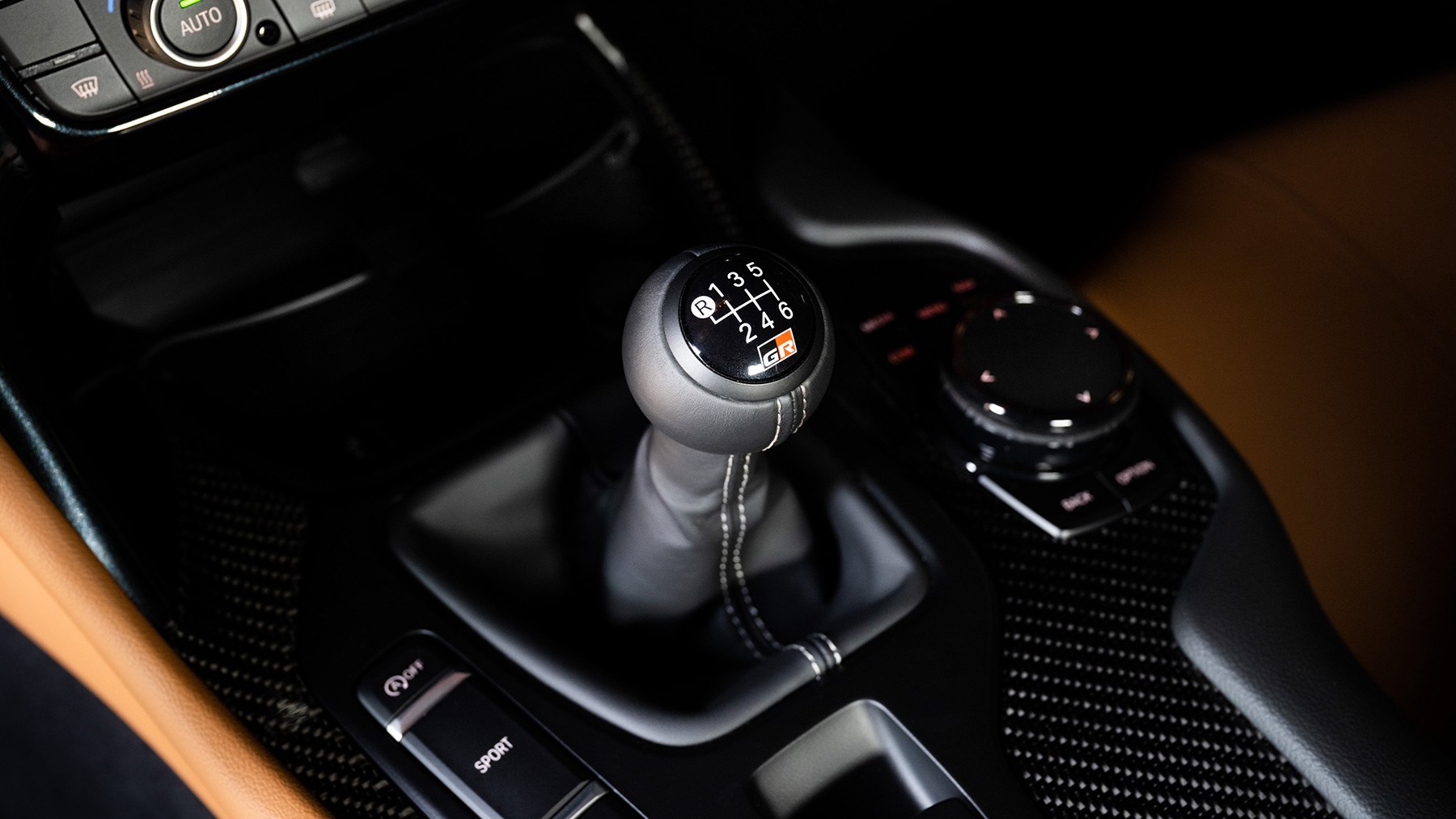
There are further downsides. Spaces to put things in the interior are few and far between, the door pockets are tiny and the shallow stowage tray ahead of the gear selector has a habit of losing its contents on twisty roads. As per the Z4, however, there are two handily big cupholders in the centre armrest which can be used as bric-a-brac containers.
Over-shoulder visibility past the rear pillars’ broad blind spots is poor, although that’s the case for many coupes. Forward and side visibility are fine by low sports car standards, however.
The distinctive ‘double-bubble’ roofline makes for genuinely plentiful headroom for both occupants, although taller occupants need to be careful not to clock their head on the low-lying cant rails on the way out.
Gearchanges are smooth and unobtrusive for the most part, the auto ‘box slushing through ratios with silken abandon. It gives the car a more GT outlook, compared with the manual transmisison introduced in summer 2022.
Is it any good on track?
We tested the original Supra at the twisty Jarama circuit near Madrid at launch in 2019, and it made a very good account of itself.
I recall the BMW Z4 was quite tail-happy in its sportiest driving modes but the Supra feels more planted, yet also more malleable towards the limit.
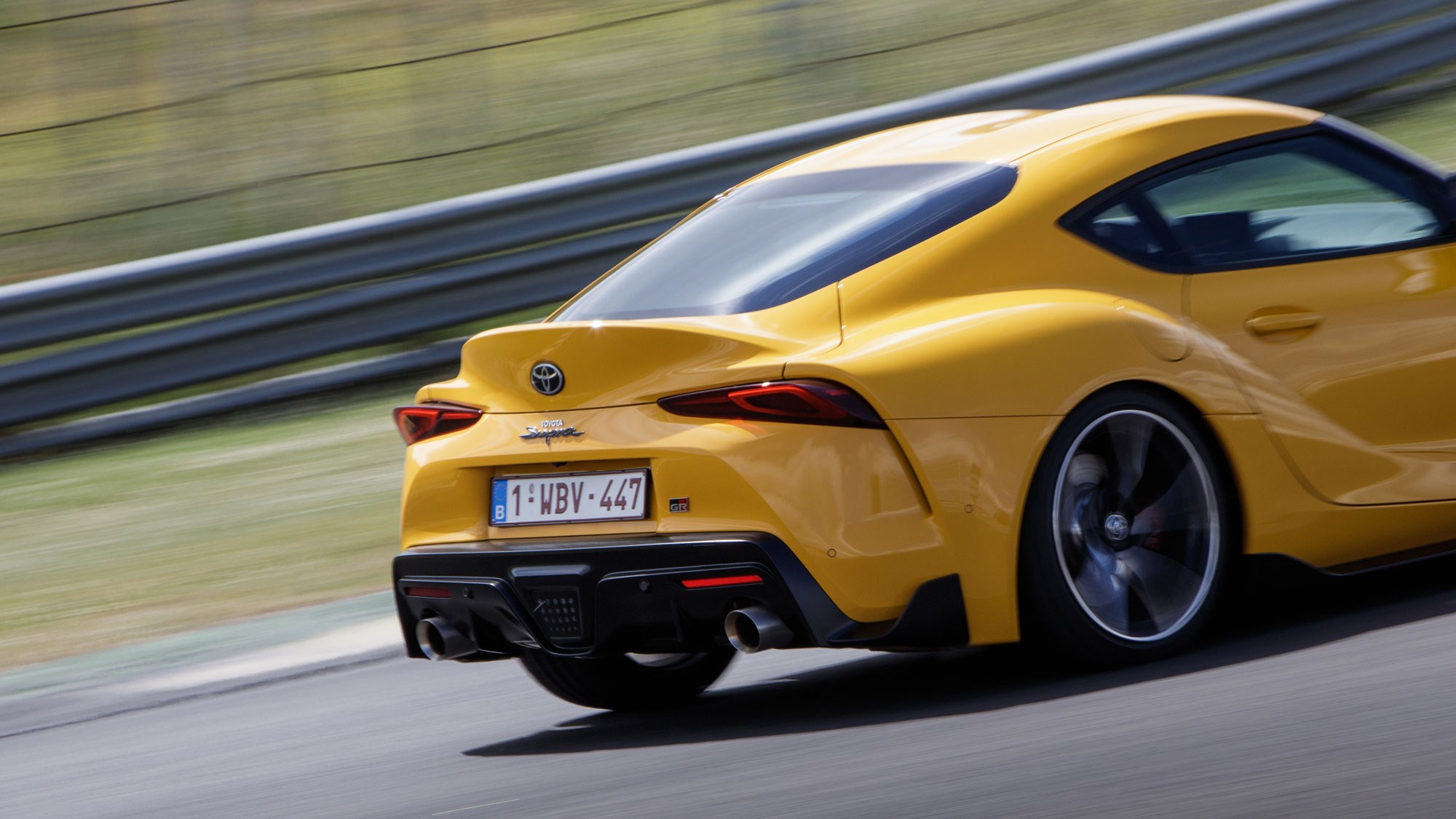
The short wheelbase helps it change direction quickly and it’s easy to manipulate the car’s line mid-corner with a lift from the throttle. Its seemingly unquenchable reserves of front-end grip impressed, helped by both the wide track’s four-square stance and the Michelin Pilot Super Sport tyres.
Some of the long, tightening corners at Jarama require a late downchange from third to second and the gearbox was occasionally a little slow to allow a downshift, the car lurching a little as it did so. More annoyingly, the glovebox kept flopping open mid-corner.
While the 335bhp turbocharged engine feels muscular on the road, at hilly Jarama you can’t help but crave a bit more punch. Certainly, the chassis could handle more power.
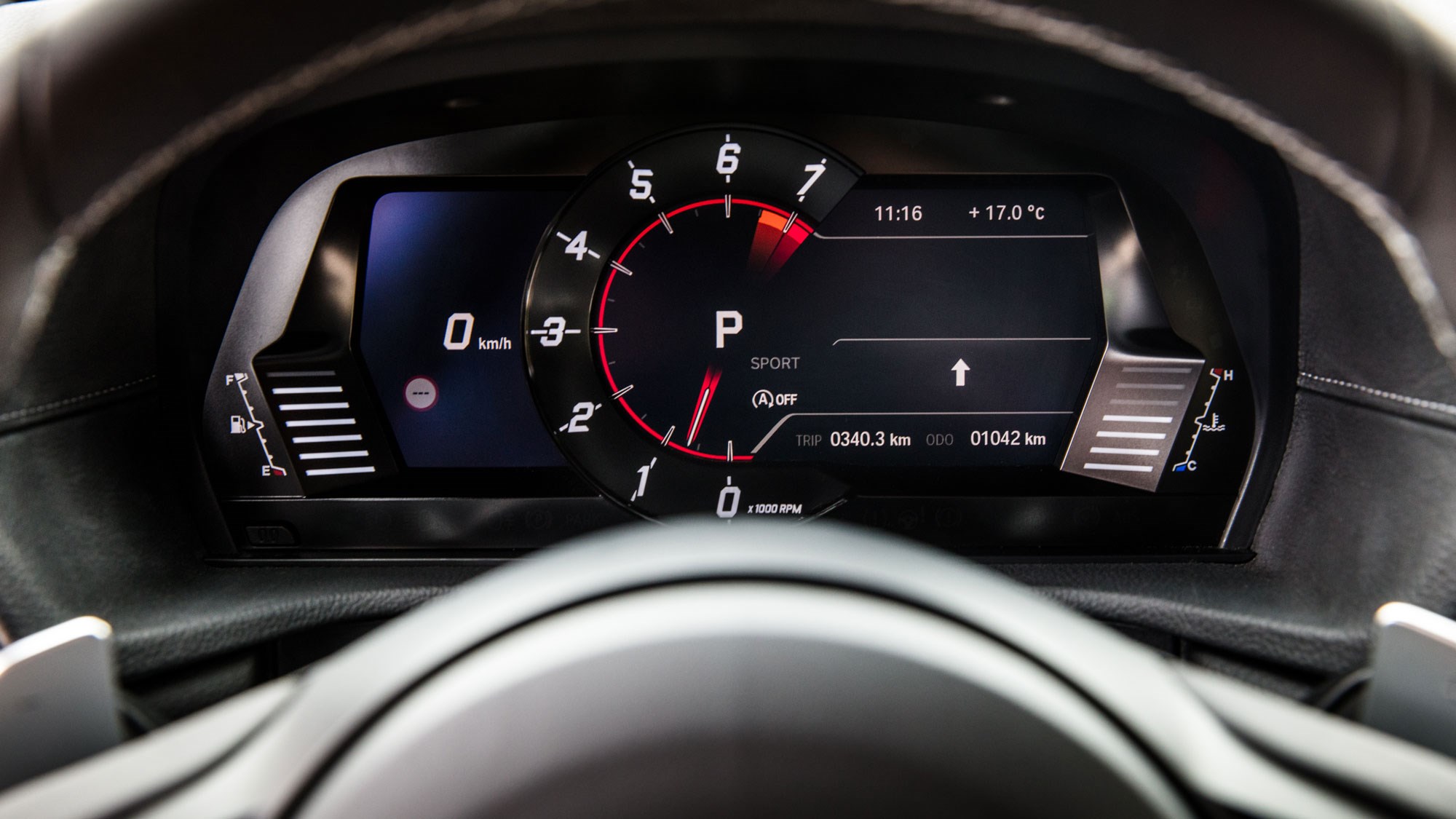
UK pricing has swollen somewhat since launch: blame the pandemic, wildly oscillating costs and the general cost of living crisis. A Supra 2.0 Pro starts at £49,495, the cheapest 3.0 manual from £53,495.
Toyota Supra: verdict
Is the Toyota Supra the Cayman-beater Toyota set out to create? On gut feel, not quite. While the Toyota’s balance and handling are top drawer, instinct says the Cayman is still another step ahead dynamically. Roll on the group test to be sure, though…
The Supra does have the advantage of six cylinders to the Cayman’s four, and a more evocative soundtrack to go with it, albeit one that’s partly enhanced through the speaker system (and, while purposeful, isn’t quite a sound for the ages, to these ears anyway).
Just like the Alpine A110, the Toyota Supra is a charismatic sports car with its own charms that could well convince a discerning buyer to choose it over Stuttgart’s coupe – and be entirely justified in doing so.
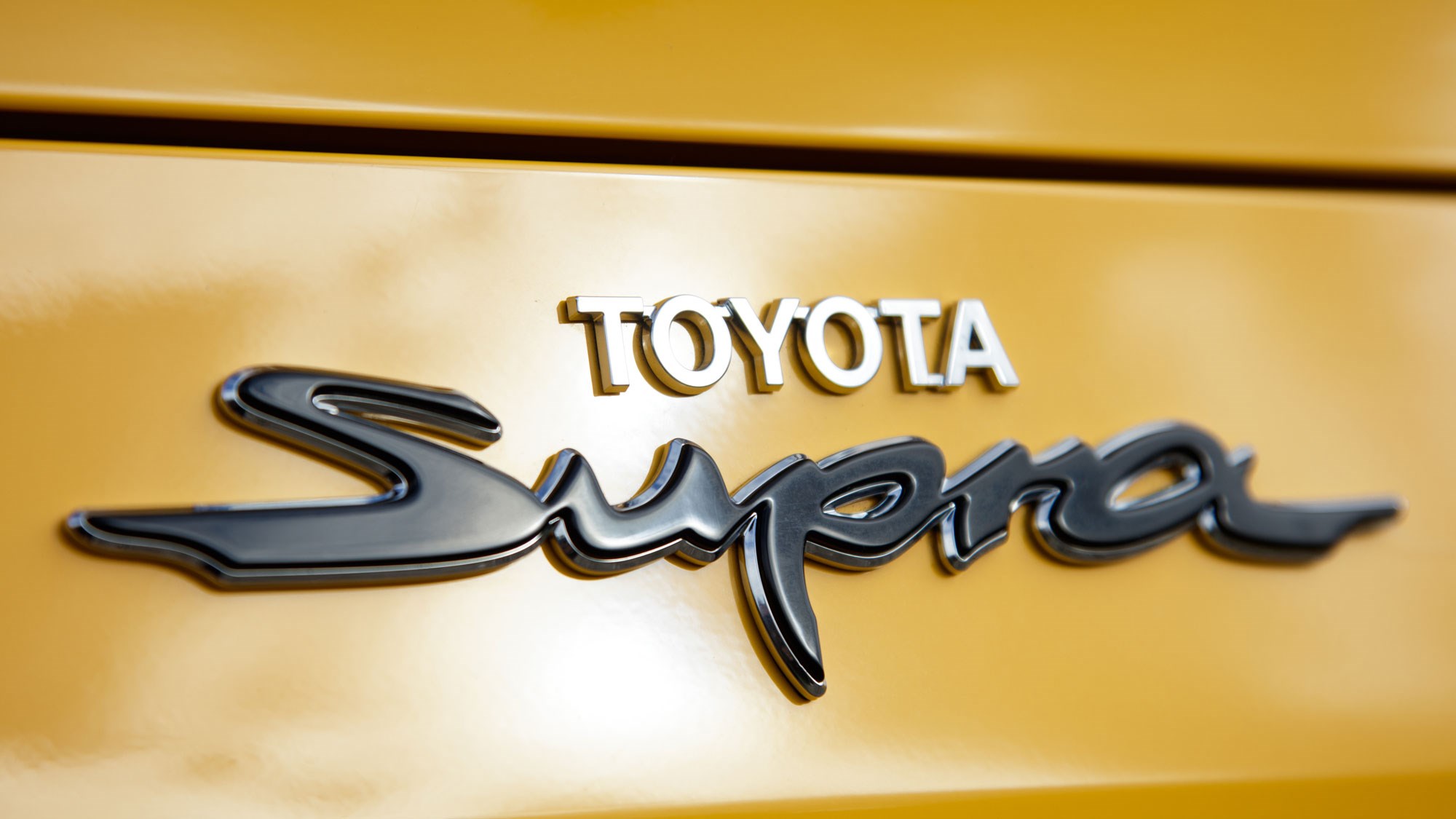
More pertinently, it’s a new volume-production sports car that has made it, against the odds, into a world that’s increasingly difficult for such a species to survive within. Spot the manual Supras by the red badging on the rump (black logos above mean it’s an auto).
‘Even though it is a shared platform with Supra and Z4, it’s not a big volume. That was a problem for us,’ Tada told us. ‘We had to make new parts for this platform.
‘The Supra is an old-fashioned sports car. By which I mean, we tried to reduce the electronic intervention, people want to feel the engine roaring. I expect these cars will be the last of their generation with pure engine sound [because of pass-by noise regulations becoming stricter every year]. I want Supra to be a final present for the car fans before the regs kick in.’
With a choice of four- and six-cylinder engines, manual and automatic gearboxes, we’d say it’s job done. Enjoy cars like the Toyota Supra while you can, folks.
More Toyota reviews by CAR magazine